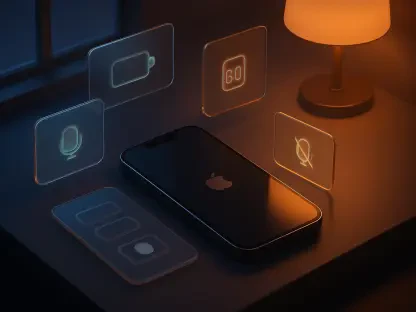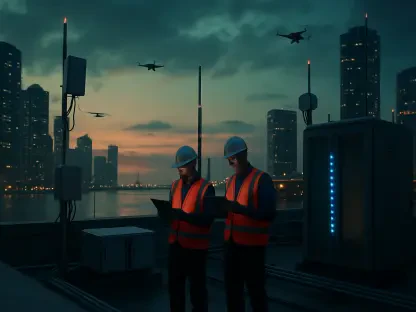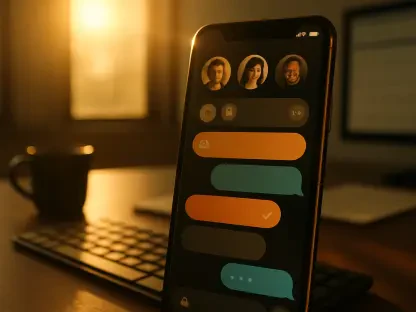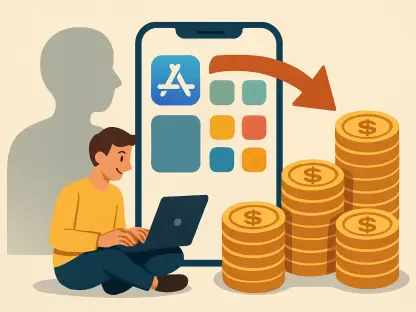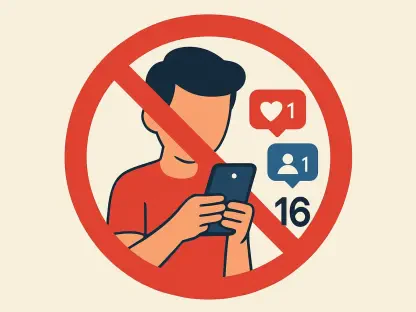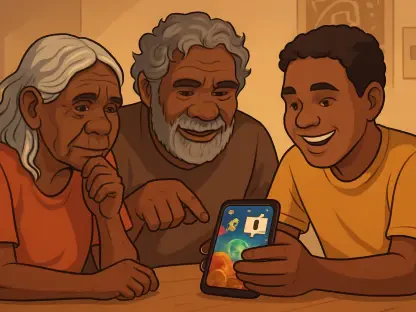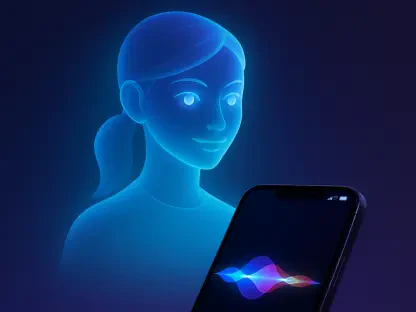SpaceX’s innovative new direct-to-cell Starlink service, which beams data directly to consumer smartphones, marks a groundbreaking shift in connectivity options for T-Mobile subscribers. This technology, currently in its beta phase, promises to eliminate cellular dead zones by providing satellite connectivity when traditional cell towers are out of range. The early adopters of this service, particularly those using select Samsung Galaxy handsets and iPhones with iOS 18.3, have begun to share their insights. Their feedback highlights both the impressive potential and the present limitations of the service, as it seeks to revolutionize mobile communication in remote and underserved areas.
Functionality and Performance
The initial functionality of the cellular Starlink service includes only SMS text messaging and location sharing, with future plans to expand into voice calls and data downloads. This limited scope has provided a basic yet crucial form of connectivity in areas where traditional ground-based cellular signals are unavailable. Users have observed that satellite connectivity activates as designed—only when there is absolutely no ground-based cellular signal. This automatic detection ensures that users are seamlessly connected to the best available service. However, the actual performance of this nascent technology varies significantly among users. Some individuals have found it to be a lifeline in remote regions, while others have confronted frustrating signal drops and inconsistent connectivity.
Among the early testers, Paul Byrd, who owns a Galaxy S24+, reported using the service while on a hunting trip in a secluded area. While he found the service functional, he noted that it was slower than regular texting, highlighting the performance disparity between satellite and traditional networks. John Antikainen from Knoxville, Tennessee, shared his positive experience with the service on his Samsung S24 Ultra, appreciating its ability to maintain connectivity in zero-coverage zones. This capability indicates a hopeful future for the technology, assuming it can be further optimized. Conversely, Ohio-based Nicholas Kiefer’s video demonstration underscored the challenges of maintaining a consistent signal. Quick message transmission was feasible when connected, but maintaining that signal proved challenging.
User Experiences
Diverse user experiences provide a clearer picture of the cellular Starlink service’s performance in its beta phase. Paul Byrd shared his hunting trip experience, revealing that the service, while functional in remote areas, was significantly slower than conventional texting services. This discrepancy in speed indicates that while the service holds promise, there is still substantial room for improvement. John Antikainen’s experience was notably positive; he managed to stay connected in areas typically void of traditional cell signals. This reliable connectivity showcases the potential of Starlink to enhance mobile communication in remote and underserved regions.
Other users, like Nicholas Kiefer, have painted a more complex picture. Kiefer’s video demonstrations displayed the technology’s inconsistent signal strength, highlighting both its potential and its present limitations. Despite quick message transmission when a connection is established, maintaining that connection remains a significant hurdle. Ian I, another beta tester, described the service as promising yet unreliable, particularly noting high battery consumption and frequent signal interruptions. This feedback underscores the need for ongoing refinements before a broader commercial launch is feasible.
Despite these challenges, the optimism among users is palpable. The potential for improved performance with the addition of more satellites, specifically those with B25 LTE spectrum, offers a glimmer of hope. T-Mobile and SpaceX are actively using this beta phase feedback to refine and enhance the service. The planned broader commercial release, where satellite connectivity could be a premium add-on or included in higher-tier plans, further fuels this optimism. The early feedback has been instrumental in driving these enhancements, illustrating a clear path forward for the technology’s evolution.
Technology and Future Potential
Beta testers recognize the groundbreaking nature of the cellular Starlink service, envisioning enhanced performance as SpaceX continues to launch more satellites and expand its infrastructure. The technology’s ability to provide global connectivity, particularly once voice calls and internet access are integrated, is perceived as a transformative advancement for mobile communication. Testers like John Antikainen view the potential addition of these features as a future “game changer,” capable of revolutionizing connectivity in even the most remote areas. The enthusiasm for the technology’s future is tempered with a pragmatic understanding of its current needs and the refinements required for broader commercial deployment.
This optimism is rooted in the reality that the Starlink service represents a significant leap forward in satellite technology. The ability to potentially provide global connectivity for smartphones is a visionary step, albeit one still in its infancy. Early adopters have experienced a mixed bag of outcomes, ranging from functional connectivity in previously unreachable areas to frustrations with signal instability. The feedback from these beta testers is critical for guiding the ongoing development of the service. SpaceX and T-Mobile’s commitment to leveraging this input ensures that the technology will continue to evolve, addressing current challenges head-on.
The early stages of any revolutionary technology are invariably marked by both remarkable breakthroughs and notable hurdles. The cellular Starlink service is no exception. While initial testers have highlighted issues such as inconsistent signal strength and considerable battery consumption, they also recognize the immense potential this technology holds. The collaborative efforts of SpaceX and T-Mobile are focused on refining these aspects, driven by user feedback. The ongoing expansion of satellite infrastructure and technological improvements aim to address these early-stage challenges, making the vision of seamless global connectivity a more tangible reality.
Challenges and Criticisms
The beta phase of the cellular Starlink service has unveiled several critical challenges that SpaceX and T-Mobile need to address before a full-scale commercial launch. Frequent signal drops and the inconsistency of the service have been common complaints among users. These signal issues significantly affect the service’s reliability, particularly in urgent or emergency situations. Ian I voiced his frustrations, describing the current iteration of the service as underwhelming and unreliable for emergency use due to these frequent interruptions and the high battery consumption associated with maintaining a satellite connection.
This significant battery drain poses another practical challenge for extended use, making the service less favorable for long-term scenarios without immediate access to recharging options. Despite these criticisms, many users remain hopeful for future improvements. Kiefer, for instance, anticipates enhancements with the addition of more satellites equipped with B25 LTE spectrum. His optimism is echoed by others who see the service’s potential to become a reliable substitute for traditional cellular networks in remote areas once these issues are resolved.
T-Mobile’s reception to the early feedback has been notably positive, taking user experiences seriously in refining the service. The company’s commitment to incorporating this feedback into ongoing developments is a crucial step in addressing these early-stage inconsistencies. The anticipated infrastructure expansion and technological improvements suggest a promising future for satellite-based smartphone connectivity. The goal remains to transition from a beta phase filled with learning opportunities and enhancements to a stable, commercially viable product offering consistent and reliable connectivity regardless of location.
The ongoing collaboration between T-Mobile and SpaceX aims to tackle these hurdles head-on, with a clear focus on enhancing the service based on user feedback. Despite the current challenges, the consensus among beta testers is that the cellular Starlink service holds considerable promise. The vision of connectivity unconstrained by geographical limitations remains a powerful driving force behind these efforts. As development continues, the feedback loop created by beta testing is instrumental in guiding the improvements needed to realize this vision.
User Anticipation
SpaceX’s pioneering direct-to-cell Starlink service is set to transform connectivity for T-Mobile users by delivering data straight to their smartphones. This innovative technology is currently in its beta stage and aims to address the issue of cellular dead zones by leveraging satellite connections when traditional cell towers are beyond reach. As part of this rollout, early adopters, including users of certain Samsung Galaxy models and iPhones running iOS 18.3, have begun to share their experiences. Their feedback reflects the remarkable promise of this service while also shedding light on its current limitations. This feedback is crucial as Starlink aspires to revolutionize mobile communication, particularly in remote and underserved regions where connectivity has been a challenge. This new service could serve as a crucial solution for individuals in areas where laying down traditional infrastructure is difficult or impracticable, ensuring they stay connected no matter where they are.


